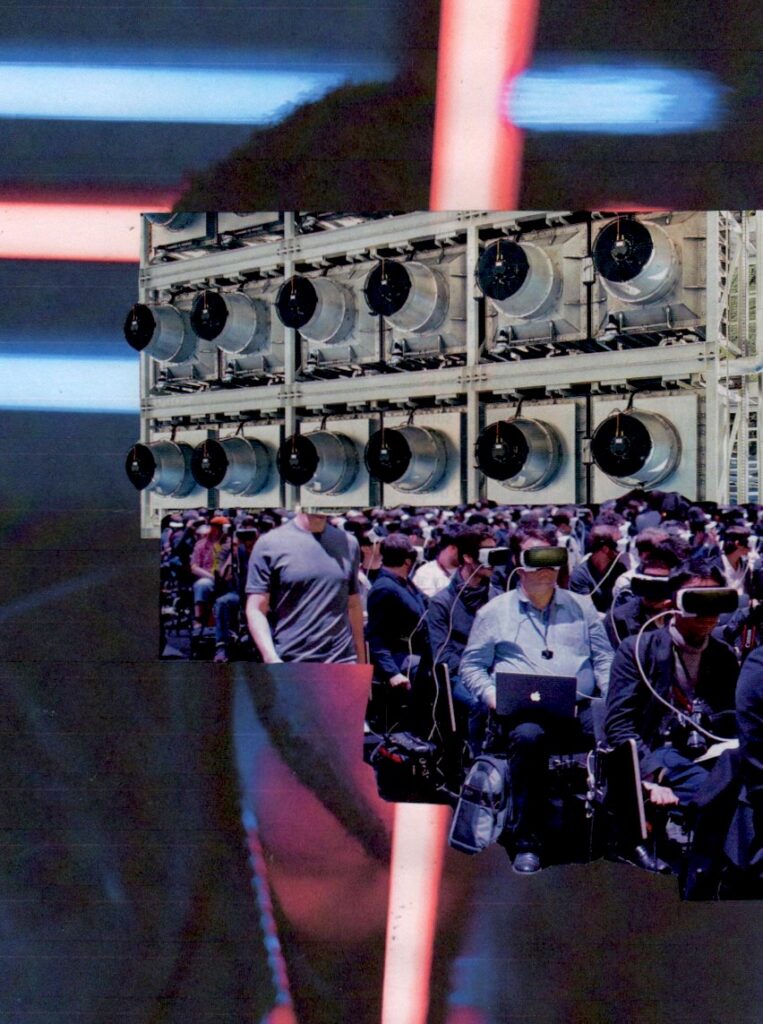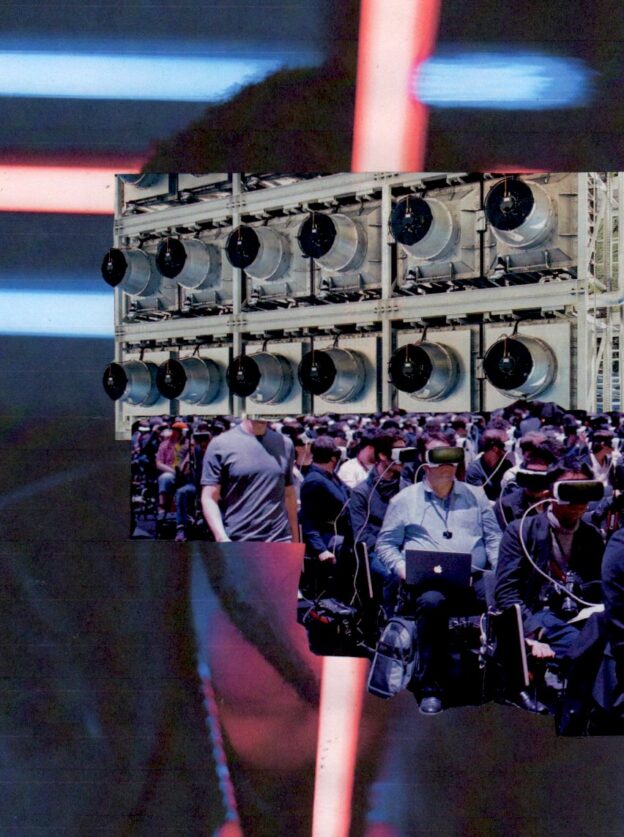This paper was first given at The Freud Museum London on June 23rd, 2018 as part of their weekend of events entitled “A Weekend of Discontent” inspired by the re-boot of the “Civilisations” series broadcast on the BBC. It was part of the BBC Civilisations Festival and supported by The Freud Museum and Art Fund.
In June, news outlets announced that the World Health Organisation classified “Gaming Disorder” as a mental health condition classified under “disorder due to addictive behaviours”. Meanwhile, the NHS is opening its first gaming disorder clinic in London. Whether or not you agree with the diagnostic label, there is no doubt that we are now surrounded by technology-related addictive behaviours. We used to be concerned about emails – but next to gaming and social media, worry about email addiction is akin to being hung up on medical marijuana while there’s an opioid crisis. Arguably, we’re in the middle of our own tech-induced opioid-like crisis, only it’s not chemically induced. It’s a new, non-chemical opium for the masses.
What makes our digital landscape so addictive is its relationship to basic human psychology. The nature of this psychology can be framed easily through a Freudian lens because it involves both the pleasure principle and the ego. When describing the addictive nature of tech I generally think of it like a Venn diagram with two overlapping circles. One of those circles represents “novelty” and the second one represents “something about me”.
Novelty falls under the rubric of the pleasure principle – it is one of the primary drivers of human interest and attention. Something new. It excites our interest. They way in which it excites our interest has been used by the gambling industry for decades – what is called “variable ratio reinforcement” – sometimes you win, but mostly, you lose – generally something like 97% of the time. It works by randomly giving out rewards; the unexpected nature of these random rewards activate the dopamine centres of the brain. It’s what keeps you hooked on fruit machines and video poker. However, what’s particularly perverse about this dynamic when it comes to technology, is that it works even when the content behind what is being reinforced isn’t particularly pleasurable. For example on a fruit machine, the content of what is being reinforced is a cash prize – pleasurable, right? However, the draw works equally well with your email system. Many of us curiously and energetically check emails at all times of the day, but hardly ever do we get an email that makes us feel good—emails are rarely like a cash prize. In fact, most emails make us feel bad. So why do we keep checking? The pleasure is in the novelty of the random occurrences of a new email rather than the email itself – we are seeking pleasure but getting anxiety instead, as a general rule. Pretty sick huh? We’ll get more into this in a bit – looking for something but getting something else.
The second circle is the Ego circle—“Stuff about me”. Freud’s daughter Anna developed a comprehensive theory of the ego and its defences. Why defences? Because the ego is a very strong mental construct that is hell-bent on both aggrandising and protecting itself: it’s bolshy but vulnerable. It’s also completely self-interested. Self-interest is its job. Freud described the ego as being like a mental callous that develops between the internal world and the external world: it develops from the constant bumping of our internal world into what he calls “the reality principle” – the hard edges of real life – just like a callus forms on your foot when it continually bumps into the hard reality of a shoe that fits too tightly. It’s the job of the ego to synthesise all our conflicted internal drives and then manage to deploy them in socially appropriate ways in the external environment. It manages everything from our basic survival and sexual drives to our more abstract human desires for status, social acceptance, and the creation of work and art. The ego always has its ears and eyes open to any interest the outside world has in it, whether that be validation or criticism. It’s antennae are always sensitised and ready to sound an alarm that rings “HEY LOOK! SOMETHING ABOUT ME!”
So this brings us back to our Venn diagram with its two circles of novelty and ego – and where they overlap you find almost everything the smartphone in your pocket does. What is a ping, a buzz, a vibration but a notification that says “Hey, here’s something new about you!” Your brain’s reward system lights up for the novelty and your ego pricks its ears curiously because, hey, it’s all about me!. You’re hooked. We’re all hooked.
Freud was not an optimist, and though I expect he thought we’d have wiped ourselves off the planet by 2018, if we managed to prevent ourselves from doing that he could have seen this self-involved, perpetually distracted culture coming. So did George Orwell and Aldous Huxley. And though Orwell was the superior writer, Huxley turned out to be the superior soothsayer. He drew us a picture of a pleasure seeking and appeasing Utopia that was fundamentally dystopian while at the same time being oddly appealing and uncannily similar to our 2018. It has everything that we have – easy access to sex, drugs to quell our anxieties, and myriad distractions to keep us occupied instead of doing things to undermine the nature of its rigidly hierarchical society. Should we start to question that or feel badly about something, there’s always a soma holiday to take or a game of centrifugal bumble puppy to distract you. If that doesn’t work, there’s always “The Island” where you can go off and think in peace, without undermining the whole of the brave new world.
In our world we might not have Soma, but we do have Prozac, Ritilin, Valium, and Ambien – among other mood stabilisers, mood enhancers, beta blockers, and pain relievers that have literally become the opium of the masses. These drugs are no doubt useful in certain contexts, but they are also widely abused and grossly over-prescribed. We also have a host of recreationals that can now be delivered right to your door—soon by drone—with the ease of an Amazon purchase, only through the Dark Net and a Bitcoin wallet. Indeed we may not have Centrifugal Bumble-Puppy like they do in Brave New World, but we do have the distractions of Facebook, Twitter, Instagram, Fortnite, FIFA, and Minecraft – not to mention “Netflix and chill”. Let’s throw in Amazon too, while we’re at it, which makes an already pleasure-seeking consumer culture even more easily accessed – to which we can also include Uber-Eats and free streaming pornography so we can meet all our pleasures at once without even leaving the couch.
But what about the couch? I didn’t mean that couch – but if you want that, you can get that online too. You needn’t roll too far out of bed to log onto Skype at your convenience to speak with your therapist and ask, “Why am I so unhappy?” Today, that therapist is likely to be another human being – but robo-therapist isn’t too far off. In fact, there’s already one called “Ellie” who was created by DARPA, the US’s Defence Advanced Research Projects Agency. Rest assured, if it’s being developed by the US military, what could possibly go wrong? The verisimilitude of her avatar is uncanny. Her multiple cameras, trained on the facial expressions and micro body movements of her patients can spot anxiety quicker than a real life clinician, and best of all, she can say “umm” in over 150 different ways.
But let’s leave robo-therapist aside for now. That’s off in the (near) future. Right now, however, we are right in the middle of that overlap of the Venn diagram, right in the navel: novelty and ego. But wait, there’s more! Tech also lowers the bar to access, as I’ve just been discussing. The addictive draw is aided and abetted by our hardware that gives us access to it, at the lowest of bars, through the smartphone we have in our pockets. So the drugs, the porn, the food, the entertainment are all there to satisfy the pleasure seeking drives – while the social media is there to satisfy, however empty the calories, our more advanced ego and relational drives. So we have Tinder too! We can now expose ourselves to more possibilities of romantic or sensual love than our brains are able to process, let alone our genitals – and let’s not forget all those broken hearts either. The bar to other human beings is down at ground level – you don’t even need to jump – just swipe right for yes and left for no. If one doesn’t work out, just keep on swiping.
But where does all this swiping get us? As human beings we fundamentally seek mutual recognition, which Relational Psychoanalysis understands as complex emotional and psychological feedback across sameness and difference: the kind of high complexity feedback you get through real-life face-to-face, body to body communication. However, when relationships are deployed and mediated through social media, what we end up with is not deep and complex mutual recognition. Rather, it is likes, follows, retweets, and validation for our selfies. When we win, we win small. When we lose, we lose big: trolling; negative self-comparison; unreasonable expectations of our bodies; exclusion, and envy of everybody else’s sunny worlds; fake news; the US president’s tweets, and arguably, the US president himself. In technology we have both the source of unpleasure and the go-to distraction for avoiding it.
Freud argued that we have very good reason to turn away from the unpleasurable world – because it’s so bloody threatening on so many levels. In his Civilisation and its Discontents he notes:
“We are threatened with suffering from three directions: from our own body, which is doomed to decay and which cannot even do without pain and anxiety as warning signals; from the external world, which may rage against us with overwhelming and merciless forces of destruction; and finally form our relations to other men. The suffering which comes from this last source is perhaps more painful to us than any other.”
I told you he wasn’t an optimist.
But to his credit at the time he wrote this he had already lived through the First World War and Europe was careening towards the second. In drawing up dystopias, you can get a lot worse than what ours looks like now, that’s for sure. You could say our world leaders are trying quite hard to get there again, it would seem, with one in particular using social media as a means to achieve it – but that’s another lecture. No, Freud recognised our need to turn away from this harsh world – the “reality” of the reality principle is just too hard to endure. He states:
“Against the dreaded external world one can only defend himself by some kind of turning away from it.”
He notes a variety of ways in which we do this, one of the more successful methods is the use of intoxicants – usually alcohol. But since we’ve already covered substances, I thought I’d play around with Freud a bit here. Oddly, and it might just be the English translation, but he refers to such substances as “intoxicating media”. I wondered what it would be like to re-read this section of Freud but to modify it accordingly by adding the word “social” before every mention of “media”. What would happen? Let’s see:
“The service rendered by intoxicating [social] media in the struggle for happiness and in keeping misery at a distance is so highly prized as a benefit that individuals and peoples alike have given them an established place in the economics of their libido.”
By this last bit he means that we give [social] media a prized role in amongst our limited time and energy. He goes on,
“We owe to such [social] media not merely the immediate yield of pleasure, but also a greatly desired independence from the external world. For one knows that, with the help of this ‘drowner of cares’ one can at any time withdraw from the pressure of reality and find refuge in a world of one’s own with better conditions of sensibility.”
Think about this in terms of escaping emotional complexity on Facebook or Twitter. We take refuge in the fantasy because reality is too messy. We trade likes and angry faces for dialogue.
Wait for it, here comes the best part:
“Intoxicating [social] media are responsible, in certain circumstances, for the useless waste of a large quota of energy which might have been employed for the improvement of the human lot.”
In short, we could be doing something productive. We could be doing something beautiful. We could be doing something humane. Instead we do selfies and Instagram stories.
This reminds me of a comment a Western Civilisation professor once made when I was an undergraduate learning about Ancient Greece. He said that our University town of Boulder Colorado had approximately the same population that inhabited Ancient Athens. A city that not only produced Socrates, Plato, and Aristotle, but a plethora of others who fundamentally impacted the world that we live in today. What does Boulder Colorado have to speak for it’s population today he asked? Jose Cuervo Beach Volleyball?
Today there are more than a billion people on Facebook and over a hundred million on Instagram. I wonder what a more productive use of all those hours might be if they were devoted to something for the betterment of humanity. If I may interject one note of optimism into a weekend of discontent, it’s that I see no reason why, with a bit of thought and ingenuity, we can’t think our way to achieving this. Where there’s a will there’s a way, no?
The trouble is that we put so much hope into our technology. We hope that it will solve our energy crisis, clean up the plastics in the oceans, prevent natural disasters, save the world. Technology can create Frankenstein’s monster, but it can also eradicate Smallpox. Technology itself becomes an object of our fantasy. Human beings are proud of their technology, but as Freud notes “they seem to have observed that this newly-won power over space and time, this subjugation of the forces of nature, which is the fulfilment of a longing that goes back thousands of years, has not increased the amount of pleasurable satisfaction which they may expect from life and has not made them feel happier”
I’m not entirely sure I agree with Freud on this point. For instance, if his daughter Sophie had had access to a flu vaccine, perhaps she wouldn’t have died in 1920. Advances in the treatment of cancer would have relieved him from many years of pain – and between these two things alone, perhaps he wouldn’t been so much of a pessimist after all. Having said that, the dissemination of fake news may have got the Nazis into power the first time around – and modern computing and Facebook’s frighteningly accurate data points on the population of Europe may have made the Nazi machine even more efficient than it already was.
Freud noted that while technology has been able to bring some pleasures and conveniences, those very pleasures and conveniences invite their own consequences. He notes:
“If I can, as often as I please, hear the voice of a child of mine who is living hundreds of miles away or if I can learn in the shortest possible time after a friend has reached his destination that he has come through a long and difficult voyage unharmed? … If there had been no railway to conquer distances, my child would never have left his native town and I should need no telephone to hear his voice; if travelling across the ocean by ship had not been introduced, my friend would not have embarked on his sea-voyage and I should not need a cable to relieve my anxiety about him.”
Technology itself, you see, produces the anxieties it also wishes to eliminate – or it creates new ones.
We use technology to avoid our anxieties. To stop ourselves from feeling, to distract ourselves from loneliness. But of course it doesn’t work. Instead we become worked up in other ways, antsy, restless: to quote Paul Simon “I got a short little span of attention and oh my nights are so long.” But our nights aren’t long! They are getting shorter and shorter – another sign of the sleepless apocalypse, due to the blue lights from our smartphones – frequently the first thing we encounter in the morning and the last thing we see before closing our eyes. Will the world go out with a glowing blue whimper? Or will it go out with a president tweeting at dawn?
The new anxiety is a default sense of danger. When there is some sort of trouble – a hurricane, an earthquake, an isolated terrorist attack, Facebook assumes you are in peril until you tell it otherwise by “marking yourself as safe”, even if you were miles away from the event. “Have you marked yourself safe?” it asks – and if you ignore it it demands, “Your friend so and so is safe. Why don’t you let them know you are too?”. In all the above events, even a Tsunami, more people survive than end up as casualties, so why are we defaulted to think something has gone terribly wrong first. Our default should be that we are okay until proven otherwise.
I was speaking to someone just last week who noted, “I’m going on a digital detox but I’ll leave my phone on just in case of an emergency”.
I said: “Why don’t you turn off your phone too?”
She looked at me like I was crazy. The thing about emergencies are that they are rare. Even if we recognize this intellectually, we feel they will happen the day we leave our phone at home. Emergency has become our default position. When I was a child, I would go out and play all day and all night – all sorts of crazy things. My mother didn’t know I was safe until I got home – often dirty, sometimes smelling of smoke (not because I was a smoker, but because I was a pyromaniac). The worry only started if I was later than the agreed time for my return. There was no checking via text – no tethered parenting.
Technology is a source of digital discontent. And if this is the case, it’s because we respond to it mostly passively. While it would make an ideal servant, instead we serve it: it bings, and we answer. It cons us into thinking it’s pleasurable when it’s clearly not. It’s like the con of the cigarette. One smokes to calm down, but the nicotine creates further anxiety. It makes you anxious while priming you to want more – all the while quietly killing you. There’s only one way out of this technological descent into hell, and that is not to become Amish.
It’s to become aware. What do I want my tech to do for me? How do I wish to engage with it (or not)? What choices am I making? Technology after all, is merely an extension of human nowse – a very sophisticated human tool. It’s a representation of what we are too – our dreams, our fears, and as Freud would remind us, our desires. Like fast food, technology may give us what we want, but not what we need. It’s time we go back to the drawing board, and start to turn that around.
Freud, Sigmund. Civilisation and Its Discontents. 1930.
Written by DR AARON BALICK
Originally published JULY 2018

Artwork by KATE HOLFORD
© Copyright for all texts published in Stillpoint Magazine are held by the authors thereof, and for all visual artworks by the visual artists thereof, effective from the year of publication. Stillpoint Magazine holds copyright to all additional images, branding, design and supplementary texts across stillpointmag.org as well as in additional social media profiles, digital platforms and print materials. All rights reserved.



